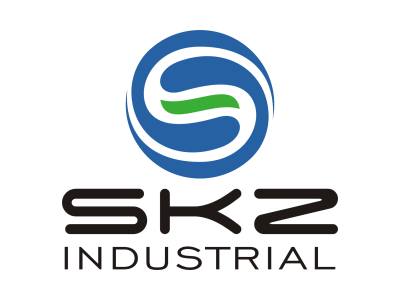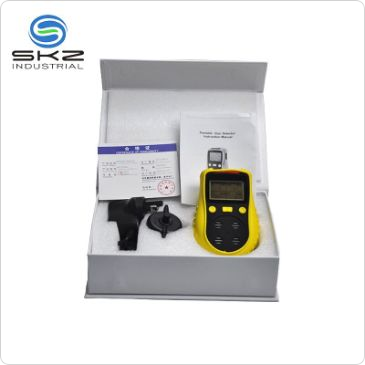Why Dust Monitoring Matters for Air Quality and Safety
The Growing Demand for Clean Air in Industrial Spaces
As the industries grow, there is increasing awareness of the imperative to keep the air clean, particularly in industries such as manufacturing, construction and mining. This demand is largely the result of increased regulation and public concern over the long-term health effects of airborne particulates. Tougher laws are compelling companies to focus on maintaining clear air and compliant work places. Multiple researches demonstrate how bad air quality can hinder productivity and in turn financial health of a company. Workplace-related respiratory diseases, for example, cost the U.S. economy in excess of $40 billion dollars annually. Given this reality, an increasing number of employers are making significant investments in the latest dust-monitoring technology to reduce such costs and to create safer working conditions. Portable and online gas detectors are increasingly being used as typical instruments to keep the air quality at industrial sites.
Linking Dust Exposure to Respiratory and Cardiovascular Risks
Such exposure has been strongly correlated in a number of studies with significant health hazards -- for example, respiratory diseases including asthma and chronic obstructive pulmonary disease (COPD). Over the long term, long‑term exposure to particulate matter can also cause cardiovascular effects such as hypertension and heart disease, studies by the Centers for Disease and Prevention have found. Certain kinds of dust, for example silica and coal dusts, have higher risk and may lead to silicosis and pneumoconiosis. It is therefore essential to establish a reliable dust concentrations monitoring system for early identification of hazardous dust levels in the air, with a view to preventing such serious health impacts. Dust monitoring has a role not only in protecting the health of individuals; it is also part of preventive medicine interventions aimed at protecting the public health by decreasing the respiratory and cardiovascular morbidity due to poor air quality.
Health and Safety Implications of Poor Dust Control
Common Workplace Hazards: From Silicosis to Combustible Dust
Workplaces with inadequate dust suppression feature major health risks for workers, who are directly exposed to deadly particles like silica and at risk of developing conditions like silicosis â a common work-related lung disease. In addition, combustible dust poses an equally explosive hazard, with 281 dust-related incidents from 1980 to 2005, highlighting the potential of catastrophic accidents. Adopting reliable dust monitoring software are able to minimize these risks by using early intervention. The training of workers to identify and control such hazards is vital if incidents of this nature are to be prevented, highlighting the role of technology and skill as equally important in safety.
Case Studies: How Unmonitored Particulates Lead to OSHA Violations
Case studies Lessons learned Drilling down into case studies can be educational, providing detailed looks at how the failure to properly control dust can lead to expensive OSHA citations. For instance, a factory was fined $1 million for not having adequate dust control caused to unsafe levels of air quality. These breaches have serious consequences, form monetary consequences as well as damage to an organization's image. Paying to be proactive with the monitoring of the dust on portable gas monitors and fixed gas detectors can avoid such occurrences by guaranteeing that safety standards are being adhered to and money and reputations are being saved over the long term.
Early Warning Systems: Preventing Escalation of Airborne Risks
Good dust monitoring generally focuses on early warning alerts that warn of dangerous levels of dangerous particles before risk develops. The deployment of such systems helps companies to take preventive measures to protect their workers. Studies show that factories that have more advanced monitoring technologyâ such as dust monitoring sensorsâ have managed to decrease airborne risks up to 40%. Therefore, these facilities are essential for continued compliance, improved safety, and a dedicated approach to health and safety through innovative solutions like dust and gas detection systems.
Regulatory Standards and Compliance Requirements
OSHAâs Permissible Exposure Limits (PELs) Explained
Know the OSHA PELs: Permissible Exposure Limits Are Safeguards.SizeFIELD(s): OSHA's permissible exposure limits (PELs) are limits that protect workers against the health effects of exposure to hazardous substances. These limits establish the maximum amounts of certain hazardous substances, such as dust, that employees can be exposed to at work. For instance, the OSHA PEL for respirable crystalline silica is 50 micrograms per cubic meter of air based on an 8-hour workday. Adhering with these standards is essential for avoiding legal consequences and preserving the health of your employees. Businesses can put into action confident dust measurement habits to measure lengths of concentration against the above OSHA requirements.
EPA Guidelines for PM2.5 and Respirable Crystalline Silica
We have some of the toughest standards in the world right now," Schade said in an email The EPA has set strict standards for particulate matter (PM2. 5) and silica that are harmful to public health. While PM2. 5 standards have substantial implications on the outdoor environment, they also affect indoor air quality regulations. Knowing these regulations can help businesses stay within the law and avoid severe penalties. By utilizing dust monitoring systems the size of these particles can be measured more accurately to meet with EPA regulations and help implement effective dust management control measures. This procedure has a protective effect on the health of employees and the neighbourhood.
Documentation Strategies for Audit-Ready Facilities
A key factor in audit preparation is having good documentation — all dust monitoring records and exposure readings are also to be documented anyway. Audit-ready facilities are built on the foundation of routine checking logs, regulatory checklists and training logs that keep an establishment in a state of audit-readiness in anticipation of any inspections. Use of digital tools can make these documentation processes more efficient and easier, thereby easier to keep in compliance. Documentation, documentation, documentation – Not only does good documentation make operations more transparent, it can be your best defense against an OSHA violation as well, making it imperative to keep detailed and accurate records.
Cutting-Edge Dust Monitoring Technologies
Portable vs. Fixed Systems: Balancing Flexibility and Consistency
The selection of portable vs fixed technology for dust monitoring is crucial. Ease: Portable dust monitors provide unsurpassed flexibility and can be use to rapidly conduct multiple site assessments over varying distances from the measurement location. On the other hand, stationary systems offer permanent, real-time monitoring, well suited for areas that must comply closely with dust monitoring criteria. The decision as to whether to use oral fluid depends largely on considerations around the specifics of the workplace, regulatory requirements, logistics, purchasing cost, routine monitoring frequency, and testing for appropriate specimens. The latter two systems can take advantage of dust monitoring to help improve workplace safety for regulatory compliance and the protection of personnel who may be exposed to harmful agents.
Real-Time Data Analytics and IoT Integration
Integration of Internet of Things (IoT) into dust monitoring systems has changed the concept of real-time monitoring. With these developments, companies are now able to continuously measure particulate levels in real-time in their facility for quick notification of any potential health risks. Data analytics is critical among other factors because it helps companies to spot trends and predict potential future exposure risks. This allows timely actions to be taken and limits to not be exceeded. Monitoring in real-time and by mobile interfaces, guarantees compliance and the involvement of all parties. Through the promotion of a safety first culture and added productivity, the companies should realize increased compliance to dust monitoring guidelines and the protection to workers' health that this will bring.
Laser-Based Detection and Gravimetric Sampling Methods
Novel techniques for dust monitoring, such as laser-based detection and gravimetric sampling methods provide new capabilities in terms of the accuracy of monitoring. Laser detection is also attractive for those situations demanding an accurate, non-invasive monitoring technique, a characteristic particularly desired for use in fragile test locations. In contrast, gravimetric sampling methods result in the direct measurement of mass, which often is desired for compliance reporting. The use of state-of-the-art tools greatly increases the productivity of any dust monitoring project. There are studies also closer to the present date, which found the facilities using the newest technologies have a better accuracy in the that can help them to meet a more restrictive D.W.M. monitoring demands, to protect the workers' health. Combining these techniques, businesses can achieve more accuracy in their monitoring for improved compliance and lower risk.
Best Practices for Dust Suppression and Management
Hierarchy of Controls: Elimination to PPE
The use of a hierarchy of controls is the best way of eliminating or reducing dust generation and mitigating the potential impact. This approach focuses first on the use of measures that offer the most protection: elimination. Minimize or eliminate sources of dust. Thereafter, engineering controls are key to prevent dust exposure, including ventilation systems. Administrative controls and PPE form the end of the line where other control measures are insufficient. Educating the workers about this hierarchy enables them to recognize and implement the best techniques for controlling and mitigating dust in their day-to-day jobs.
Mist Cannons, HVAC Syncing, and Wet Suppression Techniques
Mist cannons are very effective in dust control since the fine water droplets take out the airborne particles. By syncing HVAC systems with real-time monitoring information, air quality can be managed effectively through the modification of airflows in response to levels of identified particulate matter. Wet suppression methods, which are typically adopted in construction and mining, suppress dust emission through dampening of materials and surfaces with water. By combining these things, we make our working conditions safer, respect regulations and demonstrate incisive responsible operational management.
Stakeholder Training Programs for Sustainable Compliance
Investing in education is also necessary to involve interested parties in managing dust and promote a culture of safety and responsibility. Such programs should include dust monitoring, identification of hazards and best practices for dust controls. This means that the process may be repeated at set intervals to ensure that a high level of employee knowledge and compliance with industry changes is maintained. Through robust stakeholder education, organizations obtain sustained compliance as well as a strengthened safety culture. This hands-on approach means everyone in your team has the necessary background to handle dust more efficiently.
FAQ
Why is dust monitoring crucial in industrial spaces?
Dust monitoring is vital to maintain air quality, ensuring the safety of workers and compliance with stricter regulations. It helps prevent health issues and productivity loss, thus safeguarding business operations.
What health risks are associated with dust exposure?
Dust exposure is linked to respiratory and cardiovascular diseases, including asthma, COPD, hypertension, and heart disease. Particular dust types such as silica can cause conditions like silicosis.
How can dust monitoring prevent OSHA violations?
Accurate dust monitoring helps detect unsafe air quality levels early, allowing companies to comply with safety standards and avoid financial penalties due to violations.
What technologies are used in advanced dust monitoring?
Technologies such as portable and fixed systems, real-time data analytics, IoT integration, laser-based detection, and gravimetric sampling are used to provide precise and efficient dust monitoring.
How do companies ensure sustainable compliance with dust control?
Companies achieve sustainable compliance through training programs, documentation strategies, and integrating advanced dust suppression techniques such as mist cannons and HVAC syncing.

